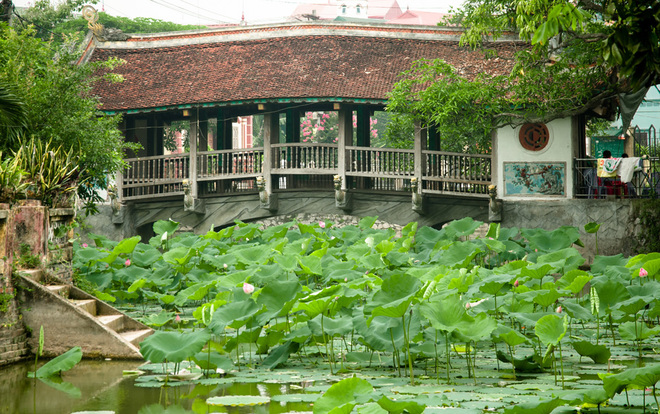Tile-Roof Bridge of Luong Pagoda: Symbol of Vietnam Architecture

The tile-roof bridge of Luong Pagoda is an important element in the place for several reasons: it is an excellent symbol of Vietnamese architecture especially maintaining its natural state despite being 400 years old; it is used for transportation; and people spend some time there with their loved ones or alone to chat o simply appreciate the beauty and peace that the structure brings.
The bridge was built in the 16th century and is located at Hai Anh Commune, Hai Hau District, Nam Dinh Province. It got its name because it was constructed about 100 metres on the way to Luong Pagoda. Its design is “thuong gia ha kieu” meaning “the house is above and the bridge is below” in literal terms.
The upper part of the bridge is a tile roof with a system of beams and pillars like in a standard house. The lower part is composed of the banisters and the roof which are held together by circular pillars and two gates at both ends of the bridge. The structure has nine compartments constructed steadily on 18 square stone pillars. Above the pillars is another system of tie-beams and horizontal beams which support the girder and floor of the bridge. The floor is two metres wide and covered with tiles that are shaped like a flying dragon. The beams and floor are made of Lim (Erythroploeum Fordi Oliver) timber.
Although the wooden part of the bridge is styled with simple carving, it is an excellent representation of Vietnamese architecture which is unique, lasting and truly beautiful. The gates are arched with two rows of pillars with Chinese parallel inscriptions. On top are structures of two lion cubs carrying a big letter.
The tile-roof bridge of Luong Pagoda is also known as the Luong Market Bridge and showcases the superiority of Vietnamese architecture as well as the fullness of Vietnam history and culture.









